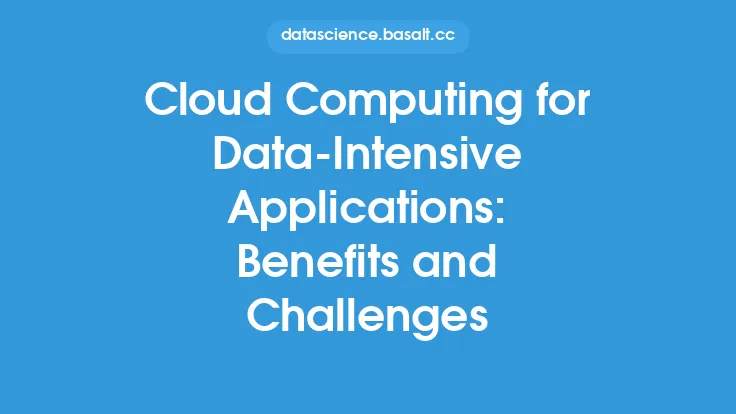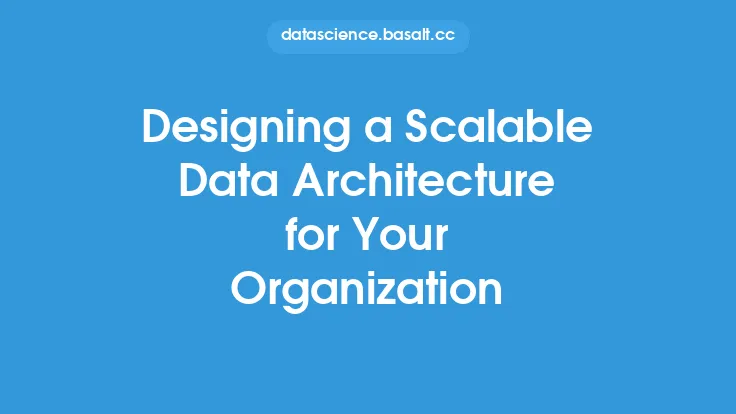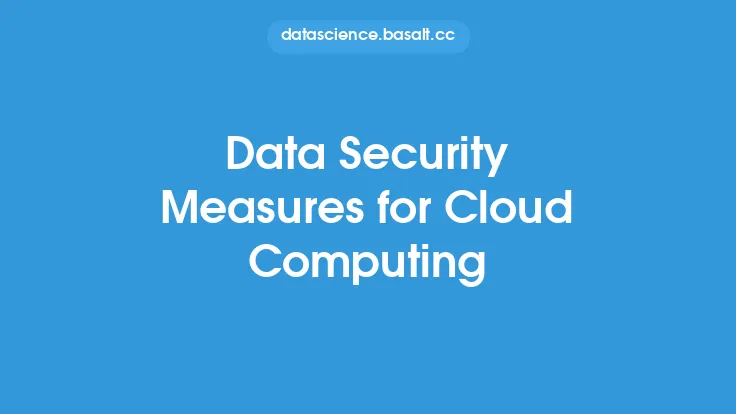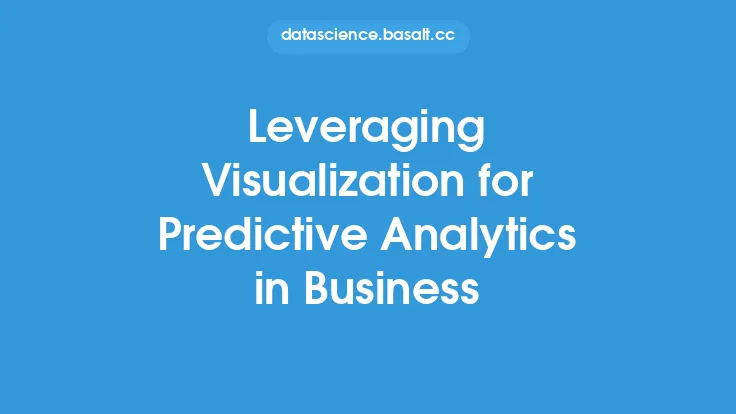The advent of cloud computing has revolutionized the field of data analytics, enabling organizations to process and analyze large volumes of data in a scalable, flexible, and cost-effective manner. Cloud computing provides a robust infrastructure for data analytics, allowing businesses to handle complex data workloads, reduce costs, and improve decision-making. In this article, we will explore the benefits of leveraging cloud computing for scalable data analytics, the key technologies and architectures involved, and the best practices for implementing cloud-based data analytics solutions.
Introduction to Cloud Computing for Data Analytics
Cloud computing provides a scalable and on-demand infrastructure for data analytics, allowing organizations to process and analyze large volumes of data without the need for expensive hardware and software investments. Cloud-based data analytics solutions offer a range of benefits, including reduced costs, improved scalability, and enhanced collaboration. With cloud computing, organizations can quickly deploy and scale up or down to meet changing business needs, making it an ideal solution for data-intensive applications.
Key Technologies and Architectures
Several key technologies and architectures are involved in cloud-based data analytics, including:
- Hadoop and Spark: Open-source frameworks for processing and analyzing large volumes of data in a distributed manner.
- NoSQL databases: Designed to handle large volumes of unstructured and semi-structured data, NoSQL databases such as MongoDB, Cassandra, and HBase are commonly used in cloud-based data analytics solutions.
- Cloud-based data warehouses: Fully managed data warehouses such as Amazon Redshift, Google BigQuery, and Azure Synapse Analytics provide a scalable and secure infrastructure for data analytics.
- Serverless computing: Cloud-based serverless computing platforms such as AWS Lambda, Azure Functions, and Google Cloud Functions enable organizations to run data analytics workloads without the need for server management.
- Containerization: Containerization technologies such as Docker and Kubernetes enable organizations to deploy and manage data analytics applications in a scalable and portable manner.
Benefits of Cloud-Based Data Analytics
Cloud-based data analytics solutions offer a range of benefits, including:
- Scalability: Cloud computing provides a scalable infrastructure for data analytics, allowing organizations to quickly deploy and scale up or down to meet changing business needs.
- Cost-effectiveness: Cloud-based data analytics solutions reduce costs by eliminating the need for expensive hardware and software investments.
- Improved collaboration: Cloud-based data analytics solutions enable teams to collaborate more effectively, regardless of location or device.
- Enhanced security: Cloud-based data analytics solutions provide a secure infrastructure for data analytics, with built-in security features such as encryption, access controls, and auditing.
- Faster time-to-insight: Cloud-based data analytics solutions enable organizations to quickly process and analyze large volumes of data, providing faster time-to-insight and improved decision-making.
Best Practices for Implementing Cloud-Based Data Analytics Solutions
To implement cloud-based data analytics solutions effectively, organizations should follow several best practices, including:
- Define clear goals and objectives: Clearly define the goals and objectives of the data analytics project, including the types of data to be analyzed, the insights to be gained, and the decisions to be made.
- Choose the right cloud provider: Choose a cloud provider that meets the organization's needs, including scalability, security, and cost-effectiveness.
- Design a scalable architecture: Design a scalable architecture that can handle large volumes of data and scale up or down to meet changing business needs.
- Implement robust security measures: Implement robust security measures, including encryption, access controls, and auditing, to protect sensitive data.
- Monitor and optimize performance: Monitor and optimize performance regularly, including data processing times, query performance, and cost optimization.
Real-World Applications of Cloud-Based Data Analytics
Cloud-based data analytics solutions have a wide range of real-world applications, including:
- Customer analytics: Cloud-based data analytics solutions can be used to analyze customer behavior, preferences, and demographics, providing valuable insights for marketing and sales teams.
- Financial analytics: Cloud-based data analytics solutions can be used to analyze financial data, including revenue, expenses, and profitability, providing valuable insights for financial planning and decision-making.
- Operational analytics: Cloud-based data analytics solutions can be used to analyze operational data, including supply chain, logistics, and manufacturing, providing valuable insights for process optimization and improvement.
- Healthcare analytics: Cloud-based data analytics solutions can be used to analyze healthcare data, including patient outcomes, treatment options, and population health, providing valuable insights for healthcare professionals and researchers.
Future of Cloud-Based Data Analytics
The future of cloud-based data analytics is exciting and rapidly evolving, with several trends and technologies on the horizon, including:
- Artificial intelligence and machine learning: Cloud-based data analytics solutions will increasingly incorporate artificial intelligence and machine learning technologies, enabling organizations to automate data analysis and gain deeper insights.
- Internet of Things (IoT) analytics: Cloud-based data analytics solutions will be used to analyze data from IoT devices, providing valuable insights for industries such as manufacturing, logistics, and healthcare.
- Edge computing: Cloud-based data analytics solutions will be used in conjunction with edge computing, enabling organizations to analyze data in real-time at the edge of the network.
- Serverless computing: Cloud-based data analytics solutions will increasingly use serverless computing platforms, enabling organizations to run data analytics workloads without the need for server management.
Conclusion
In conclusion, cloud computing provides a robust infrastructure for scalable data analytics, enabling organizations to process and analyze large volumes of data in a flexible, cost-effective, and secure manner. By leveraging cloud-based data analytics solutions, organizations can gain valuable insights, improve decision-making, and drive business success. As the field of cloud-based data analytics continues to evolve, we can expect to see new trends and technologies emerge, including artificial intelligence, IoT analytics, edge computing, and serverless computing. By following best practices and staying up-to-date with the latest technologies and trends, organizations can unlock the full potential of cloud-based data analytics and drive business success in the digital age.





